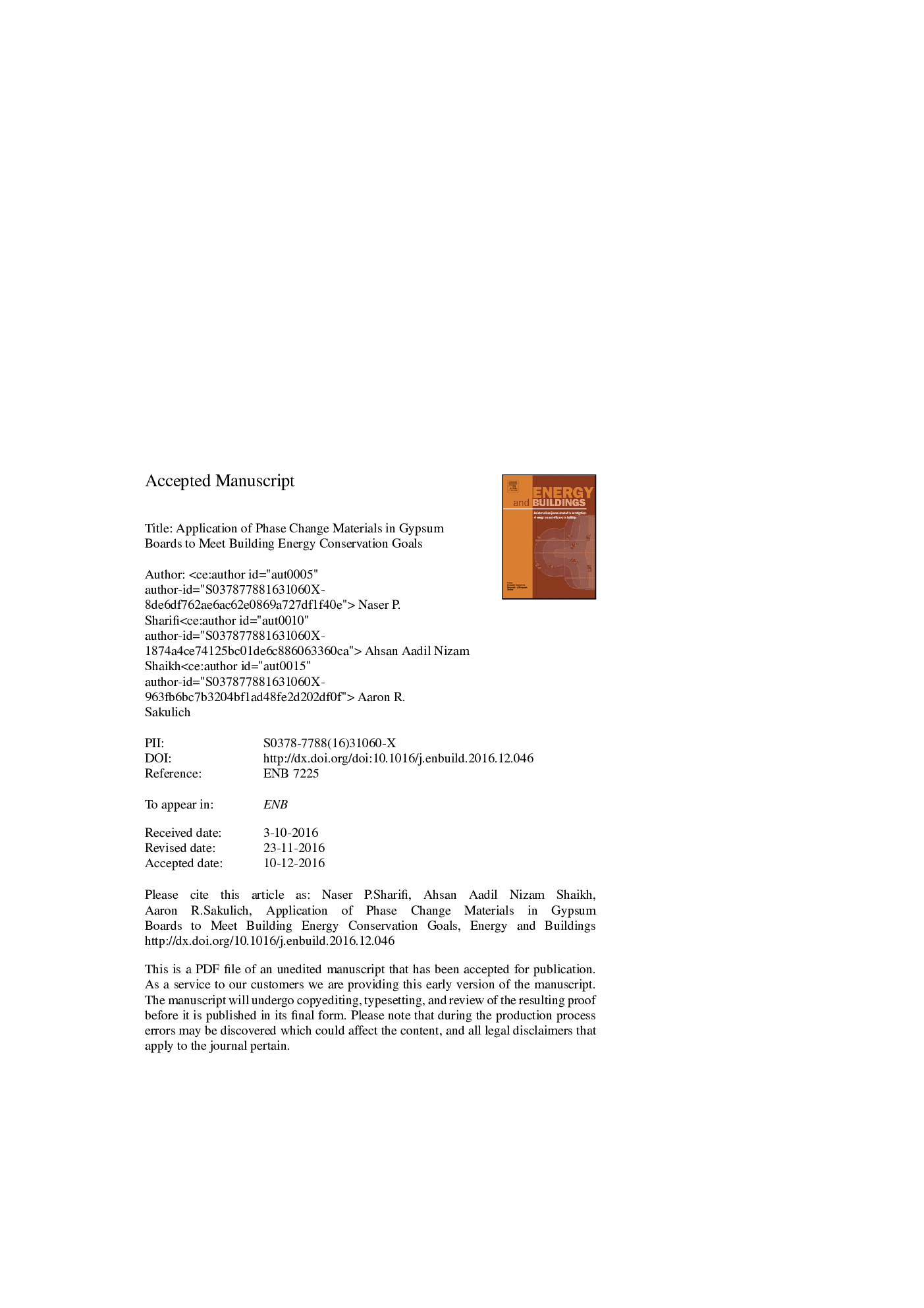| Article ID | Journal | Published Year | Pages | File Type |
|---|---|---|---|---|
| 4919454 | Energy and Buildings | 2017 | 51 Pages |
Abstract
Energy consumption in buildings has increased drastically during the last two decades. Reducing the energy demand in buildings by improving their thermal performance has therefore been the subject of many governmental plans and building codes. This study aims to evaluate the efficiency of PCM-impregnated gypsum boards on improving the thermal performance of buildings in order to achieve such energy reduction goals. Computational simulations using Typical Meteorological Year data were conducted to study the performance of PCM-incorporated walls subjected to the real temperature profiles of different cities. Four different criteria were considered and a simplified cost analysis was performed. Utilizing PCM-incorporated gypsum boards was shown to be a promising strategy to achieve energy reduction goals for buildings. The results show that using a PCM with a melting point near the occupant comfort zone delays and reduces the inside peak temperature, increases the duration of time during which the inside temperature stays within the comfort zone, and decreases the cost and energy required by HVAC system to keep the inside temperature in this range. However, the efficiency of PCMs is completely dependent on the input temperature profile, and increasing the amount of the utilized PCM leads to diminishing returns on efficiency.
Related Topics
Physical Sciences and Engineering
Energy
Renewable Energy, Sustainability and the Environment
Authors
Naser P. Sharifi, Ahsan Aadil Nizam Shaikh, Aaron R. Sakulich,
